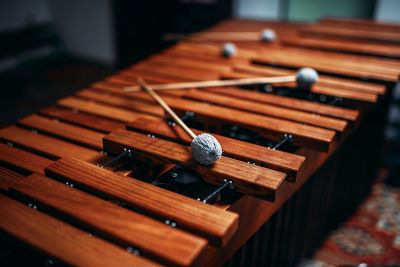Selecting Materials for Musical Instruments: a Case Example with a Xylophone
Humans have been enjoying music made by instruments for a long time. But how do different types of instruments actually make sound? And how would be select materials for said instruments based on their sound-producing method? This interactive lecture introduces the Hornbostel-Sachs musical instruments classification system as a way to start this discussion. A xylophone is used as a case example for chosing materials based on the properties required for the final product. An option hands-on activity of building an instrument from household materials is included.
Learning Outcomes
- Define music, sound, and musical instruments
- Describe different instrument classes based on the Hornbostel-Sachs System
- Define young’s modulus, density, and mechanical loss coefficient
- Explore material properties via Ashby property charts
- Question why we do not always pick the “best” material for a product
Applicable Courses for Use
- Pre-university STEM teaching, Introductory courses at university (intro to engineering, intro to music)
Downloadable Content
- Zip file containing: Read Me instructor's guide, PowerPoint lecture












